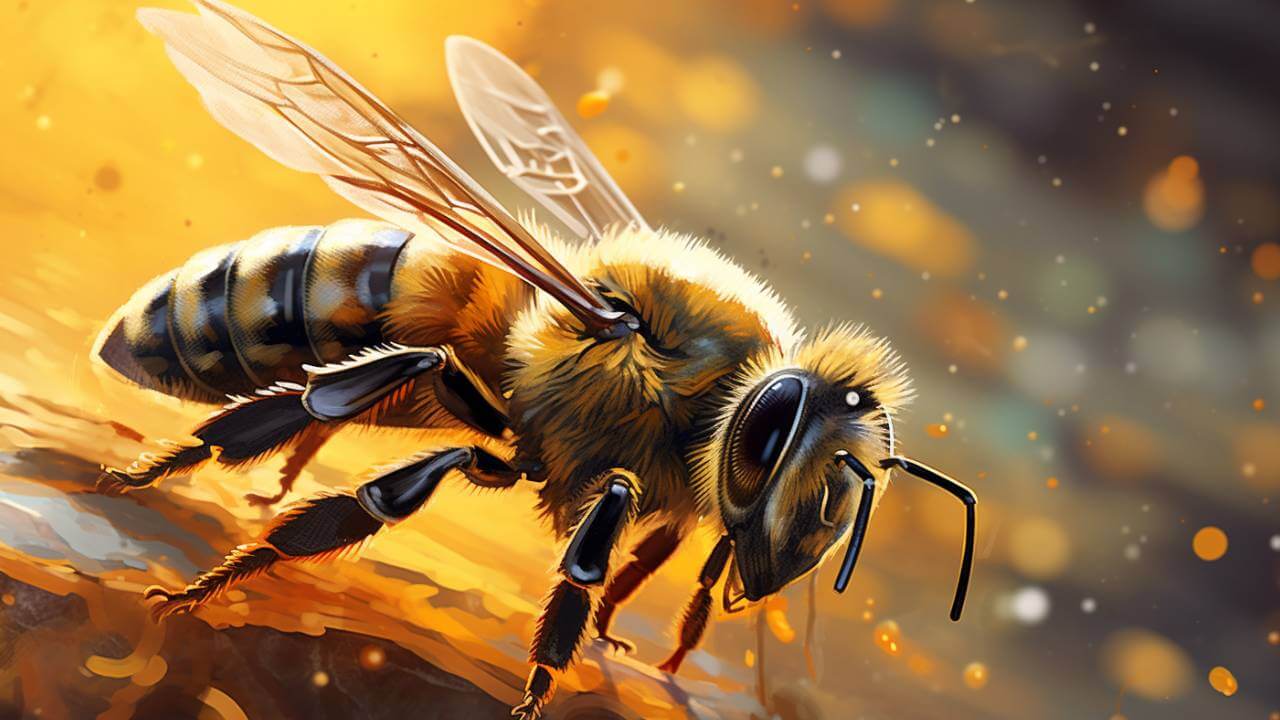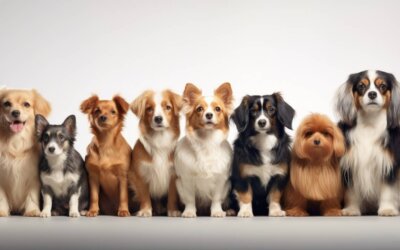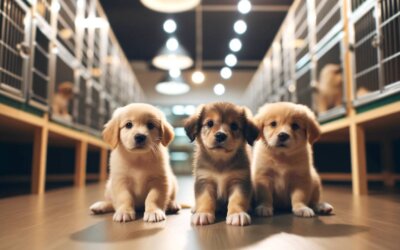Our furry companions, dogs, always amaze us with their quirky habits and playful antics. One such behavior that often leaves pet owners puzzled is the inexplicable desire some dogs have to chase and, in some cases, even eat bees.
You might have witnessed this peculiar behavior as a dog owner and wondered, “Why do dogs want to eat bees?” This article will delve into the fascinating world of canine behavior to unravel the reasons behind this seemingly odd inclination.
Why Do Dogs Want to Eat Bees?
With their keen senses and instincts, dogs often display behaviors that can leave us wondering. One such behavior is their fascination with bees. While not all dogs chase or try to eat bees, many exhibit this seemingly peculiar habit. To understand why dogs are drawn to bees, it’s essential to consider a few key factors:
Instinctual Prey Drive
Dogs are descendants of wolves; even in domestication, they retain some of their wild instincts. One of these instincts is their prey drive. Dogs are hardwired to pursue and capture small, buzzing creatures that resemble prey.
Bees, with their rapid movements and distinct buzzing sounds, trigger this instinct in some dogs. It’s akin to a “catch the prey” game for them.
Attracted by Scent
As they pollinate, Bees emit a sweet scent that can entice dogs. Your pup can mistake this scent for something delicious to snack on. Dogs have a strong sense of smell and might follow this alluring aroma to its source – the bee.
Curiosity and Playfulness
Dogs are naturally curious and playful creatures. They are intrigued by anything that moves or makes noise; a buzzing bee can pique their curiosity. Some dogs may see the bee as entertainment and try to catch it in a playful pursuit.
Mimicking Small Creatures
Bees, with their small size and darting movements, mimic the behavior of small animals that dogs might consider as potential prey, like insects, rodents, or birds. This similarity can make bees irresistible targets for dogs on the hunt.
While some dogs might use bee-chasing as a harmless pastime, knowing the potential risks involved, such as bee stings and allergic reactions, is crucial. In the following sections of this article, we’ll explore what you should do if your dog has eaten a bee and the signs to watch out for if you suspect a bee sting.
Signs Your Dog Has Been Stung by a Bee
If you suspect your dog has indulged in a bee snack, looking out for signs of a bee sting is crucial. Common symptoms include:
Swelling: Rapid swelling, particularly at the sting site, is a common and immediate reaction to a bee sting.
- Hives: Some dogs may develop hives or itchy welts on their skin in response to a bee sting, which can occur at the sting site and elsewhere on the body.
- Pain or Discomfort: Dogs stung by a bee often exhibit signs of pain and discomfort, including whining, whimpering, or pawing at the affected area.
- Difficulty Breathing: Severe allergic reactions to bee stings can lead to breathing difficulties, characterized by coughing, wheezing, or labored breathing. Seek immediate veterinary assistance if you observe these signs.
- Redness: Inflammation and redness are typical at the sting site, and the area may feel warm to the touch.
- Excessive Drooling: Dogs may drool excessively due to the discomfort and irritation caused by the bee sting.
- Facial Swelling: If your dog was stung around the face or mouth, visible facial swelling may occur, potentially affecting their ability to breathe or see.
Remember that not all dogs will react the same way to a bee sting, and some may exhibit only a few or none of these symptoms. If you suspect your dog has been stung by a bee and they display any of the above signs, take prompt action to ease their discomfort. Consider seeking veterinary care if the symptoms are severe or you suspect an allergic reaction.

What to Do if Your Dog Eats Bee
Discovering that your dog has ingested a bee can be a cause for concern, as it may lead to various complications, including bee stings and potential allergic reactions. If you find yourself in this situation, here’s a step-by-step guide on what to do:
Check for Stings
Examine your dog’s mouth and the surrounding areas carefully to see if you can spot a bee stinger. If you find one, use a pair of tweezers to remove it gently. Be cautious not to squeeze the venom sac attached to the stinger, which can release more venom.
Monitor Your Dog
Keep a close eye on your dog for any signs of discomfort or unusual behavior. If your dog is stung in the mouth, it may be painful, and you might notice excessive drooling or pawing at the mouth.
Offer Water
Provide your dog with fresh water. This can help soothe their throat if it feels irritated after ingesting the bee.
Contact Your Veterinarian
Contact your veterinarian immediately if your dog displays severe symptoms or is stung multiple times. They can provide guidance based on your dog’s specific situation.
Avoid Home Remedies
Avoid using home remedies or over-the-counter medications without consulting your veterinarian, as these can sometimes worsen the situation.
Remember that a single bee sting or ingestion may not always lead to severe problems, but it’s crucial to be vigilant and respond promptly if you notice any concerning symptoms.
Your veterinarian is your best resource for assessing your dog’s condition and providing appropriate treatment. Always prioritize your dog’s safety and well-being.
How Long Should You Monitor Your Dog if They Ate a Bee
After your dog has ingested a bee, monitoring it for at least 24 hours is essential. Look for any signs of allergic reactions or discomfort during this period. If you notice any concerning symptoms, contact your vet promptly.
Conclusion
While it’s common for dogs to eat bees, it’s essential to understand the reasons behind this behavior and how to respond if it happens. By being aware of the signs of a bee sting and knowing what to do, you can ensure your furry friend stays safe and healthy. Remember to consult your veterinarian whenever you have concerns about your dog’s well-being.

FAQs
How can I prevent my dog from eating bees?
Training and supervision can help prevent your dog from chasing and eating bees. Keep your dog on a leash outdoors, and teach them the “leave it” command.
Are all dogs equally likely to eat bees?
Some dogs have different levels of interest in bees. Some dogs are more prone to chasing and eating them due to their prey drive.
Should I use a bee repellent on my dog?
Using bee repellents on dogs is generally not recommended, as these products can be harmful. Focus on training and supervision instead.
What should I do if my dog has a severe allergic reaction to a bee sting?
If your dog experiences a severe allergic reaction, such as difficulty breathing, seek emergency veterinary care immediately.
Are there any long-term health concerns if my dog eats a bee?
In most cases, there are no long-term health concerns if your dog eats a bee. The discomfort and symptoms they experience are typically temporary and subside within a few hours to a couple of days.






Thanks for shedding light on this curious behavior.